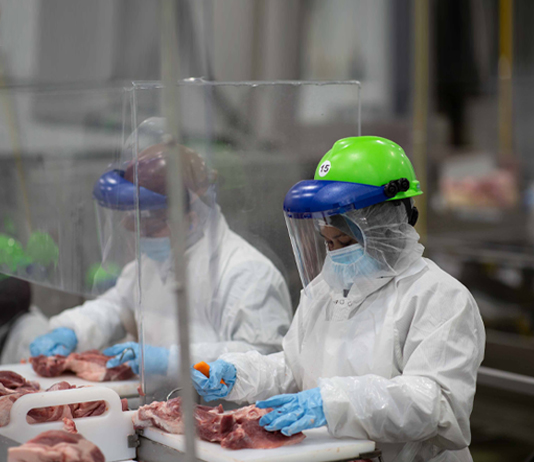
Like most meat providers in the U.S., Smithfield has had an unprecedented year this year and certainly seen its share of ups and downs as they have navigated the COVID-19 crisis, outbreaks in some of their facilities, supply issues, huge demand from customers and much more. To get some insight straight from them, we asked John Pauley, Chief Commercial Officer, to answer some timely and pertinent questions on Smithfield, as well as how retailers should be thinking about their meat department.
AWG: From a high-level perspective, how should our AWG member retailers be thinking about their meat department? Should they be adjusting their strategy due to the demand and supply issues?
John Pauley: The current state of play in the protein industry is unprecedented. On the demand side, most food, including meat, is being purchased at grocery stores and prepared at home. We expect this trend to continue through the spring, summer and perhaps longer. On the supply side, product availability may be limited in the short term due to COVID-19 related operational disruptions and market volatility. Currently, larger meat cuts and packs and ready-to-cook packaged items are more readily available. Considering these trends, this is an opportune time for meat departments to strategically focus consumers on these items, providing meal prep ideas, tips and recipes. At the same time, thanks to our company farms and national network of family farm partnerships, our vertically integrated platform will continue to assure a consistent supply of meat to our customers.
AWG: Do you see the types of cuts and sizes of packaging changing? How should retailers adjust to any of these market changes?
John: We do not expect the types of cuts and sizes of packaging to change for the long term. However, we anticipate ongoing higher consumption of bulk format (e.g. hotdogs) and convenience-oriented products (e.g. marinated fresh pork), as well as a continued shift of some items from foodservice to retail (e.g. layout bacon) in the short and medium term. Retailers should continue to adapt the meat case accordingly.
AWG: What is the best-case scenario for how a retailer should be working with a supplier like Smithfield? What are the things they should be doing to ensure the best chance at success in 2020?
John: We all must continue to focus on employee health and safety. Our more than 40,000 U.S. team members, thousands of American family farmers and our many other supply chain partners are a crucial part of our nation’s response to COVID-19. We can only keep food on grocery store shelves by working together. We encourage retailers to continue to innovate and experiment with creative merchandising, including displaying foodservice items on feature, to meet current consumption trends, particularly the eat at home movement.
AWG: Finally, I know it’s difficult to predict, but should retailers be cautious about expectations as far as supply chain and pricing goes? Any advice on how they navigate the waters?
John: The COVID-19 pandemic delivered a major shock to the U.S. protein supply chain. We expect supply to rebound and normalize by the Fourth of July holiday, with a more diverse product assortment available in that timeframe. However, facility closures and slowdowns have caused a backlog of livestock on farms, placing some within the agricultural community in jeopardy. While conditions have improved in the last month, we anticipate a continued downward supply reaction across all proteins to these market dynamics. This will also likely push market prices higher across the board.







